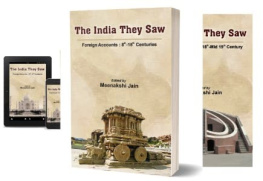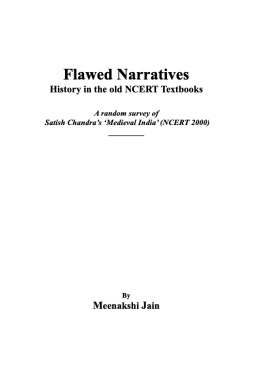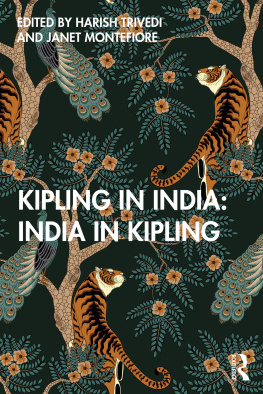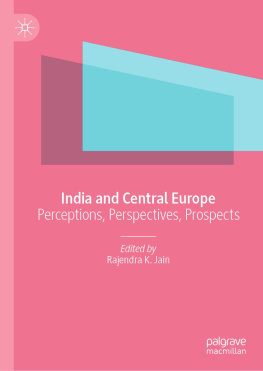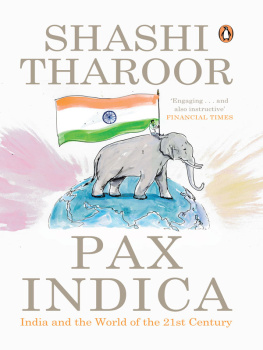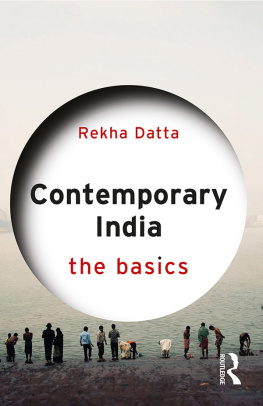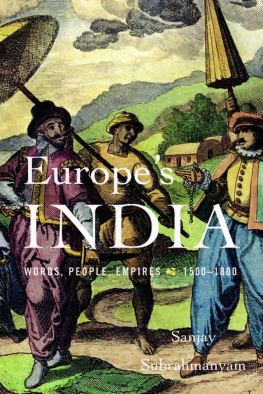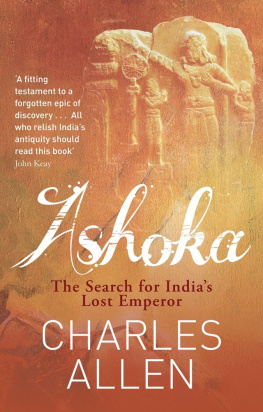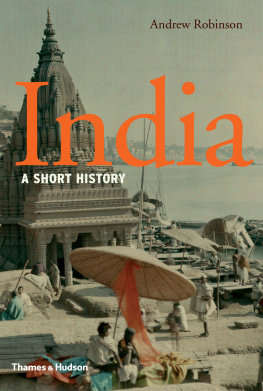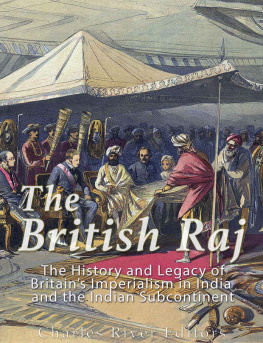The India They Saw
Foreign Accounts : 18 th -mid 19 th Century
(Volume IV)
by
Meenakshi Jain

Introduction
I n the wake of the commercial and political expansion of Europe in the eighteenth century, there was a remarkable increase in the number of Europeans visiting India, not merely for trade but also in search of her fabled ancient wisdom. For the rising middle classes of Europe, India increasingly came to embody not merely a principal source of their economic prosperity, but a symbol of the re-discovered human soul. Philosophers, scholars and poets were repulsed by the provincialism of Europe, which they considered a rather insignificant appendage to Asia. The European rediscovery of Indias cultural heritage led to the emergence of Orientalist scholarship and a belief that India, not Egypt, was the original home of the arts and sciences.
From the early eighteenth century missionaries also became active in India. A German Protestant mission was established at Tranquebar, a small Danish colony on the Coromandel Coast, in 1706 by Bartholomaus Ziegenbalg. He was succeeded by Benjamin Schultze, who completed the translation of the Old Testament in Tamil begun by his predecessor. Barely fifty miles from Tranquebar, the Jesuits set up their own mission under the Italian, Costanzo Beschi, who arrived in India in 1710 and stayed till his death in 1747. The Protestants and Jesuits engaged in frequent disputes on how best to spread Christianity in India. However, the general shift of political power to the British in South India saw the eventual retreat of the Jesuits and the growing influence of the German Protestants who came under the wings of the Society for the Promotion of Christian Knowledge in London.
French interest
Meanwhile three important centres of Indic studies emerged in Europe France, England and Germany. The new interest in the East manifested itself first in France as a quest for original texts in various languages and their exact translations. In 1727, the French Royal Librarian, the Abbe Bignon, resolved to enrich the royal collection with oriental works. Etienne Fourmonts Memoire, written that year, gave a precise account of the texts to be acquired. Among those particularly sought were the main Indian works on Indian chronology, the history of their kings, the religion and customs. There was, additionally, a demand for books on geography and medicine, as well as dictionaries and grammars. Indian texts were then a rarity in Europe. Accordingly, the French Governor-General in Pondicherry, Lenoir, was instructed to assist in the acquisition of manuscripts.
Lenoir entrusted the work to French Jesuit missionaries in India, who had been engaged in a systematic study of Indian languages. They had already completed voluminous Tamil and Sanskrit dictionaries. A French Capuchin monk, Francois-Marie de Tours, who lived in the Chandernagor Thibet Mission, had authored a Hindustani dictionary that had been deposited with the Propaganda in Rome in 1704.
The Governor-General and the Jesuit Father, Le Gac, reached an agreement whereby the Compagnie des Indes (to be reimbursed by the King of France) would provide the requisite funds and paper, and two copies made of every manuscript, one for the Royal Library in France, the other for the Pondicherry Jesuit Mission.
As a result, 287 Indian texts reached Paris between A.D. 1729 and 1735, to constitute the Bibliotheque nationales earliest Indian collection. Among them was a complete Rig Veda in Grantha characters, which arrived in the French capital in 1731. In 1732, Father Pons sent 168 books from Chandernagore that included several Sanskrit grammars and dictionaries, numerous works on mythology, philosophy, astronomy, astrology, poetry, laws, customs, worship, and twenty-five Puranas. At about the same time, Tamil and Telugu grammars, a Telugu-French dictionary and a Telugu-Sanskrit dictionary came from Karnataka. By 1736, Paris possessed several copies of the Bhagavata Purana, a Mahabharata in seventeen volumes, the Book of Manu, various Upanishads, a Rig-Veda on palm leaves, and several Ramayanas, among other texts.
In 1740, Father Jean Francois Pons presented an account of the studies conducted by the Jesuits, which was published in Part XXVI of the Lettres edifiantes et curieuses in 1743. In a well-known letter of 23 November 1740, Father Pons professed his admiration of Sanskrit and a philosophy he called philosophie morale, that he had encountered in discussions with people in India. Father Pons made a preliminary analysis of indigenous books on grammar. He translated one of them, along with the Amarakosha, the best-known of the eighteen dictionaries he was familiar with.
The Jesuit Hanxleden, who resided at the Malabar mission from 1699 till his death in 1732, had probably been the first European to write a Sanskrit grammar in Latin for his own use and to attempt a dictionary. In the second half of the eighteenth century, an Austrian Carmelite, Paulinus a Sancto Bartholomaeo, collected some important linguistic and theological works. The first Sanskrit grammar printed in Europe (in Rome in 1790) was in fact that of Bartholomaeo.
Besides the Jesuit and Capuchin missionaries, there were other Frenchmen active and interested in India. Guillaume le Gentil and M. Bailly, for instance, were engrossed in the astronomical observations of the Hindus. Several Frenchmen were in service in the Indian states, and some of their manuscript collections also eventually found their way to France. In India, the two main centres of French interest in Indian culture were Lucknow (1757-1800) and the Sikh kingdom of Punjab (1822-1849).
The Bibliotheque nationale obtained three important collections that belonged to Anquetil-Duperron, Jean-Baptiste Gentil and Antoine-Louis Polier. Anquetil-Duperron, the great scholar and explorer, arrived in India 1754 in search of the Zend Avesta, and the complete Vedas as well as the means of reading them. While in Bengal, he obtained from M. Gentil a copy of the Oupanekhat, the Persian translation of the Upanishads that had been undertaken by the Mughal Prince, Dara, in the previous century.
In 1771, Anquetil-Duperron published his translation of the Zend Avesta in French, which he also translated into Latin. This was the first approach to an Asian text wholly autonomous of Biblical and Classical traditions. In 1786, Anquetil-Duperron presented his translation of the Upanishads from the Persian text prepared by Dara. Anquetil-Duperron was an admirer of Indian civilization as was evident from his Inde en rapport avec lEurope (1798). He had done considerable work in Sanskrit by the time of his death, and also left some work on Malabar and Telugu. He gave one hundred and eighty Indian manuscripts to the Royal Library, which he had gathered between 1758-9 and 1761.
His compatriot, Jean-Baptiste Gentil, also collected manuscripts and paintings while in India. His collection, which he donated to the Bibliotheque royale on his return to France, consisted of one hundred and thirty-three volumes. It was assembled between 1757 and 1775. While in India, Jean-Baptiste Gentil had married an Indian girl from whom he had a son.
Another Frenchman, Antoine-Louis Polier, arrived in India in 1758 and stayed on for thirty years. He was permitted to copy the Vedas by the Raja of Jaipur, which he did in eleven in-folio volumes, now in the British Museum. Polier lent his set of the Vedas to Sir William Jones, who kept them for a year in his private library. Polier also studied Sikh religion and history and possessed a copy of the
Next page

